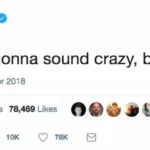Daniel Viassolo, Principal Data Scientist in the oil& gas services industry, recently was awarded Patent number 10,001,581 for a resistivity logging tool with control of excitation current.
A resistivity logging tool includes multiple excitation electrodes, at least one return electrode, and multiple monitor electrodes. The resistivity logging tool also includes a controller that determines the independent currents to be emitted by at least some of excitation electrodes during an excitation cycle based on one measured downhole parameter and at least one predetermined constraint.
“I want to thank the other contributors for their creativity and hard work” says Daniel Viassolo, “also want acknowledge the United States Patent and Trademark Office for recognizing and protecting our invention.”
Modern oil field operators demand access to a great quantity of information regarding the parameters and conditions encountered downhole. Such information typically includes characteristics of the earth formations traversed by the borehole and data relating to the size and configuration of the borehole itself. The collection of information relating to conditions downhole, which commonly is referred to as “logging,” can be performed by several methods including wireline logging and “logging while drilling” (LWD).
Among the available wireline and LWD tools are a variety of resistivity logging tools including, in particular, “laterolog” tools. Such tools typically include a central electrode around a tool body, with guard electrodes symmetrically spaced above and below the central electrode. The tool drives auxiliary currents between the guard electrodes and the center electrode to “focus” the current from the center electrode, i.e., to reduce dispersion of the current from the center electrode until after the current has penetrated some distance into the formation. Generally speaking, a greater depth of investigation can be achieved using more widely-spaced guard electrodes, but the vertical resolution of the measurements may suffer.
Laterolog tools employ a monitor electrode array to sense voltages resulting frominjected currents. These voltages are analyzed to determine formation properties (e.g., resistivity) at different depths. Such measurements are affected by formation properties, borehole properties, and controllable parameters such as the excitation current level, the excitation current frequency, and amplifier gains. Laterolog tools that do not adequately manage controllable parameters may cause inaccuracies in the determination of the formation properties.
Over the last 19 years, Daniel Viassolo has made impactful contributions to the fields of Industrial Asset Health Management and Controls, covering diverse applications domains – oil & gas, renewables, jet engines – and co-authoring 21 US patents, 30+ publications, and one book. Daniel Viassolo obtained his PhD from Purdue University in 2000. Dr. Viassolo is also active in his local Houston, Texas community, supporting various causes and institutions with his philanthropy and as a volunteer.








